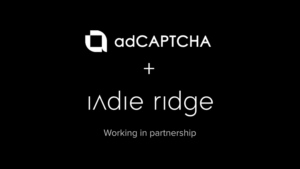Google’s new chatbot, Meena, is said to be the most advanced chatbot ever developed. Chatbots have long threatened to be one of the most disruptive technologies yet for every industry, from retail to finance, so leaps like Meena should be watched closely.
NDA is running a series of articles looking at conversational AI following Meena’s launch, on how chatbots will develop over the next year in helping brands deliver more engaging, effective experiences for consumers.
Alan Ranger, VP Global Market Development, LivePerson
As Conversational AI continues to advance, we’re entering a new era comparable to those ushered in with the introduction of websites and social media. Just as every brand needed a digital strategy, and later a social strategy, every brand will now have to execute a conversational strategy or risk becoming irrelevant. Even Google sees the future in conversational rather than web search, as reflected in the launch of Meena.
The turning point we’ve reached with Conversational AI is that we can now begin to detect and respond to customer intents in real time, which means more and more brands will implement chatbots and virtual assistants that can fulfil these intents. In LivePerson’s experience, at least 50% of all customer intents can be identified and automated.
This means that human agents — previously held back by severely limited career paths in the service industry — will be advancing into newly created roles to build, manage, and promote conversational bots. While the automation handles simple tasks, human agents will be able to take on more complex and interesting work, including playing a significant part in building smart, customer-centric, efficient operations as part of the conversation strategy no business can do without in 2020.
Vijayanta Gupta, Global VP of Strategy and Industries at Sitecore
Chatbots are well-placed to help brands deliver better quality customer support, but only if they can provide truly meaningful interactions with individual consumers, through personalisation.
Today’s customers increasingly look for a brand which looks and feels ‘human’ when they interact with them, rather a faceless entity which offers generic, pre-programmed interactions. Therefore, the AI-driven chatbots of the future must make use of accumulated customer data to help resolve problems around-the-clock in a way which is specific to every individual customer.
At present, many bots are not be able to provide solutions for more complex or unique queries or offer anything beyond a basic list of responses. As a result, some consumers simply prefer to speak to another person over the phone, or in person at a retail outlet.
In the next year, we are likely to see greater investment and experimentation into the scope of what advanced chatbots can do, and move away from building tools in isolation, which has to date led to bots often being seen by consumers as more of a hinderance than an enhancement to online experiences. Instead, brands will begin to integrate chatbots with other customer management and data tools and increase the scope for personalisation.
Peter Van der Putten, assistant professor, AI, Leiden University and director of decisioning at Pegasystems
Whilst the results of Meena look impressive, this is a research paper and it will take some time before it may make it into product. Whether Meena will have an impact on the future of commercial chatbots is less certain.
Meena is a conversational assistant that gives you an impressive chit chat bot rather than the chatbots that organisations require to resolve customers’ specific issues swiftly.
The models behind Meena are highly opaque, complex neural networks so you wouldn’t have an idea what Meena is ‘thinking’, how to combine this with background knowledge, what remedial actions to take in the back end, and whether the customer situation has been truly resolved
The shortcomings of Meena for CRM and commerce align with the those more important for the future of AI in marketing for example empathy, transparency and ethics.












